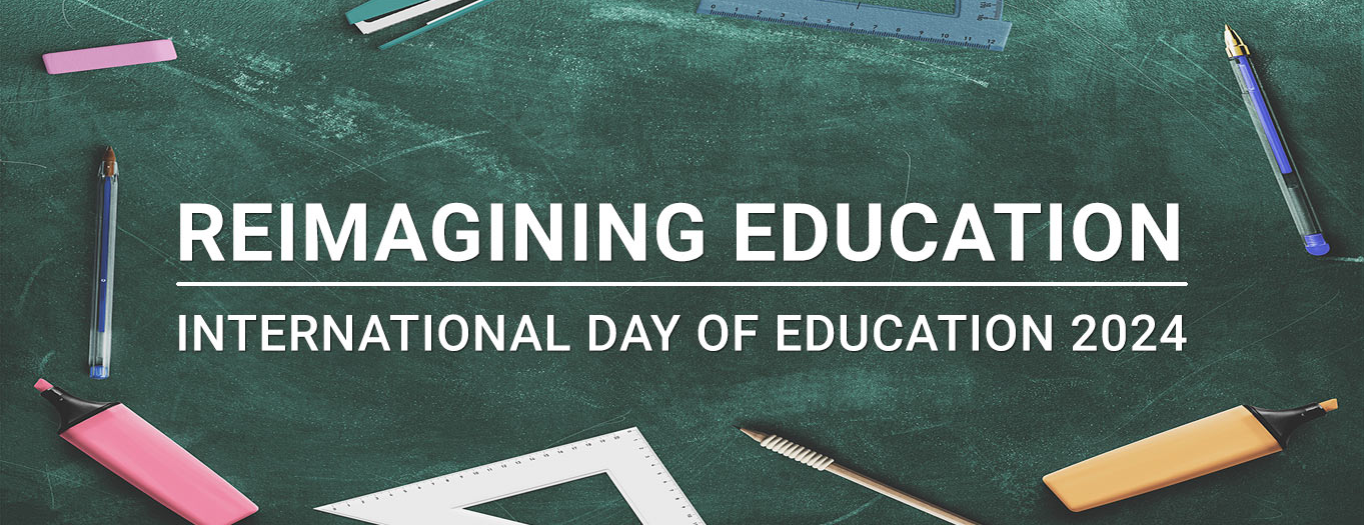
This essay is part of the series “Reimaging Education | International Day of Education 2024”.
India has registered steadily rising average years of schooling over the years with educational inequality going down. However, disaggregated analysis has shown that the urban-rural divide continues to significantly contribute to extant inequalities and disparities, with digital exposure, household occupation and income, and household size being the biggest contributing factors along with social and physical infrastructural capabilities. In recognition of the urban-rural educational divide, Information and Communication Technologies (ICT) have been harnessed to ameliorate this issue, alongside educational radio programmes being produced since 1972. In 1975, India launched the Satellite Instructional Television Experiment (the SITE project), jointly designed by the National Aeronautics and Space Administration (NASA) and the Indian Space Research Organisation (ISRO), to broadcast educational programmes to rural areas and remote schools. Over the years, rapidly expanding internet penetration in rural areas held out the promise of expanding educational access through digital means with both public and private organisations running ICT and education initiatives. These include the national government’s Digital Infrastructure for Knowledge Sharing (DIKSHA) platform which focuses on knowledge sharing and administration and Rashtriya Madhyamik Shiksha Abhiyan (RMSA) which focuses on ICT education, various state government initiatives on virtual classes and digital learning, and computer/digital-aided classroom teaching supported by different private sector entities and NGOs. However, as the COVID–19 pandemic undid decades of educational gains in rural areas, the fault lines, holding back promised digital dividends in the sector, were also thrown into sharp relief. Against this backdrop, India launched the National Education Policy (NEP) in 2020 with a firm emphasis on a forward-looking relationship between technology and education. With the aim of sectoral transformation, it focuses on integrating digital infrastructure and digital educational content, enhancing teacher capabilities, digital skilling, and inclusive education with an eye to the emerging role of disruptive technologies like Artificial Intelligence (AI).
Rapidly expanding internet penetration in rural areas held out the promise of expanding educational access through digital means with both public and private organisations running ICT and education initiatives.
Promises and pitfalls
The role of technology in augmenting and enhancing existing capabilities and plugging institutional voids is well-recognised in the NEP. The government initiatives and complementary programmes like Digital India aim to create an enabling environment for increased integration of technology in education. However, the 75th round of the NSS survey on Household Social Consumption on Education in India showed that only 4.4 percent of the households in rural areas have access to computers as opposed to 23.4 percent in urban areas. Similar trends are observable for households with internet access wherein 14.9 percent of rural households have access to internet facilities compared to 42 percent of urban households. Similarly, persons above five years of age able to operate a computer or use the internet were 9.9 percent and 13.0 percent respectively in rural areas as opposed to 32.4 percent and 37.1 percent respectively in urban areas.
The percentage of schools having computer facilities increased to 47.51 percent in 2021-22 compared to 27.31 percent in 2015-16 and the percentage of schools with internet facilities rose to 33.91 percent in 2021-22 from 24.51 percent in 2015-16. These trends stand in contrast to households which show higher internet penetration and lower device ownership, highlighting the importance of attention to contextual factors. The disparities in internet and device availability in households and schools and the gaps between them stand as first-order divides, limiting fuller integration of technology for pedagogical, administrative, and governance purposes in education. While digital technologies hold the promise of expanding access to education, access is multidimensional where multiple social, economic, and infrastructural conditions intersect to determine functionings and capabilities that structure the extent to which yields from digitisation are realised.
The disparities in internet and device availability in households and schools and the gaps between them stand as first-order divides, limiting fuller integration of technology for pedagogical, administrative, and governance purposes in education.
Industry bodies like the Internet and Mobile Association of India (IAMAI) suggest multistakeholder partnerships with the proliferating ed-tech ecosystem in India to ameliorate existing challenges. However, edtech platforms focus on specialised functionalities which remain short of addressing the existing fragmentation in the sector. As a result, teachers tend to turn to commonly available platforms like YouTube for classroom content. While these can be productively used, they prevent the fuller integration of ICTs in education to ensure that technology stands not just in a supportive function but also as a pedagogical tool to develop and implement classroom curriculum as well as evaluate and support student learning. This highlights the need for an integrated approach that can leverage and consolidate existing efforts.
Devolved ecosystem approach
ICT in education initiatives has tended to highlight the need for a systematic and holistic approach. Learning from such initiatives highlights the need for attention to wider contextual conditions that constrain last-mile rural education. Moreover, to avoid repeating efforts, facilitation of knowledge sharing becomes paramount to consolidate learnings from different initiatives. Within this context, the National Education Technology Forum (NETF), conceived as an autonomous body, is a step towards promising directions that would facilitate decision-making on deployment, implementation, and use of digital technologies towards the realisation of NEP objectives. Intended to act as a free marketplace for educational products and services, it will be implemented by the National Digital Education Architecture (NDEAR) ecosystem policy. The policy aims to create a unifying national digital architecture to facilitate participation, innovation, and adoption in this space.
Learning from such initiatives highlights the need for attention to wider contextual conditions that constrain last-mile rural education.
The ecosystem policy aims to create a Digital Public Infrastructure (DPI) for education that facilitates the participation of a diverse range of stakeholders and service providers. However, to realise the full institutional intent of the policy, a devolved ecosystem approach is recommended to increase the adaptive capacity of the ecosystem. A devolved ecosystem approach factors in conditions across different layers from the national technological backbone to last-mile contextual conditions. Building on the DPI backbone and strengthened by the interconnected service providers, the policy would be able to foster innovation as well as set system and product standards based on functional needs of administration, governance, or pedagogy attuned to localised contextual conditions. This includes a focus on open-source hardware in conjunction with open-source software and content to remedy first-order divides impeding technological integration at the last mile. A devolved ecosystem approach with built-in institutional feedback loops across different layers would enable responsive innovation and accelerate the holistic implementation of NEP objectives toward the digital transformation of the sector.
Anulekha Nandi is a Fellow at the Observer Research Foundation
The views expressed above belong to the author(s). ORF research and analyses now available on Telegram! Click here to access our curated content — blogs, longforms and interviews.




 PREV
PREV



